Bones
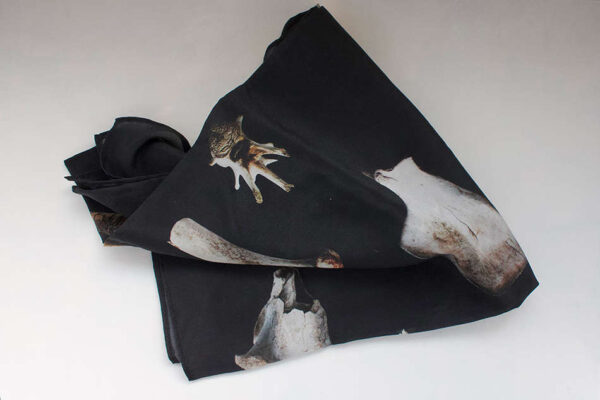
If you walk through any Australian pastoral grassland you will probably come across scatterings of animal bones: the remains of cattle, sheep, horses and native marsupials, particularly kangaroos.
When an animal dies, out in the open landscape, its flesh and bones quickly become flung about over a wide area by feral dogs and cats, foxes, dingoes and crows.
At first glance there is nothing outwardly beautiful about these random scatterings of gnawed bone, cartilage, hide and torn fur, but gradually, if you stand there in the sun and wind and waving grass, thinking about what went before, perhaps imagining the plight or sentience of the animal before it fell, you can have an understanding of the temporal nature of the dance: the animal’s birth and death, the seasons it lived through, the time it lived under the same sun and sky as you, and the time it takes for a creature to return into the earth.
If you are thinking this way about these lives that until this moment had gone unnoticed by you, unwitnessed and unrecorded, you may have reached a point of transition, a point in the dance, at which the shattered scraps around your feet will be seen as beautiful.
The beauty lies not solely in your sharpened sense of empathy, not only in the elemental sadness the scene presents, only partly in the inexplicable power of some broken bones to reshape your awareness of your own presence in the dance — but almost entirely in the silence that surrounds each object: each splintered bone, each scrap of torn fur, every stem of waving grass.
* * *
6 scarves on silk crepe de chine:
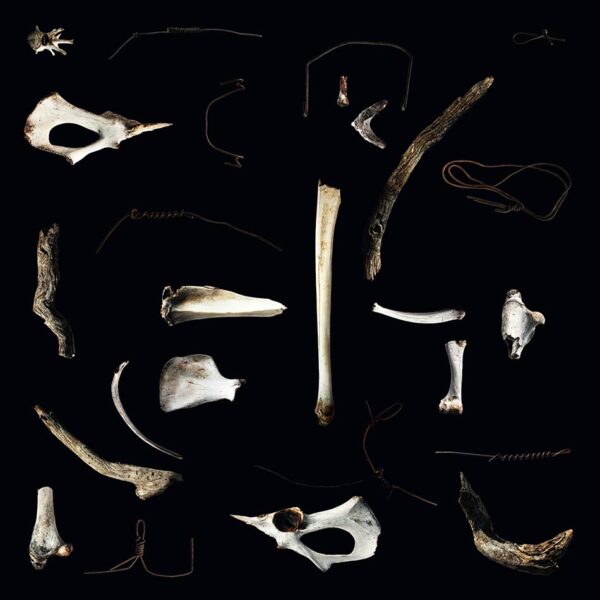
Bones scarf 1
100 x 100 cm

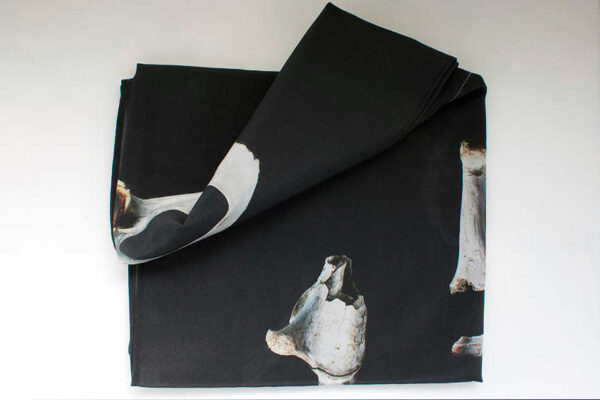
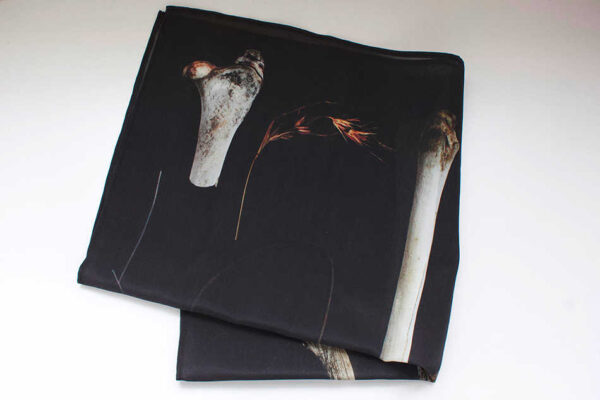
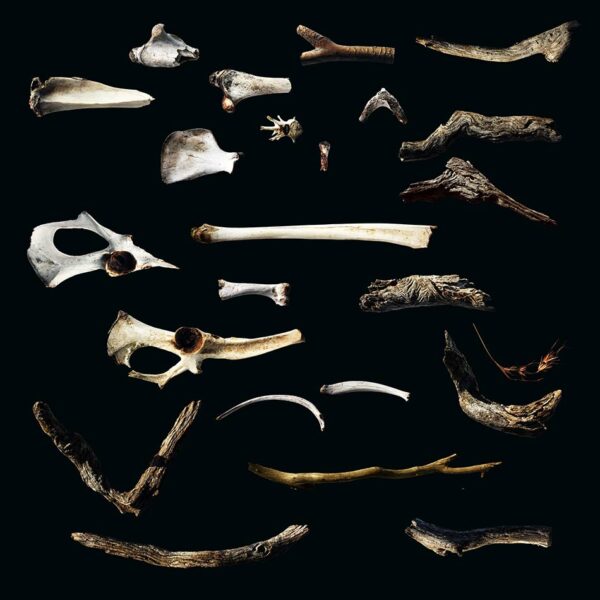
Bones scarf 2
100 x 100 cm

Bones scarf 3
53 x 53 cm
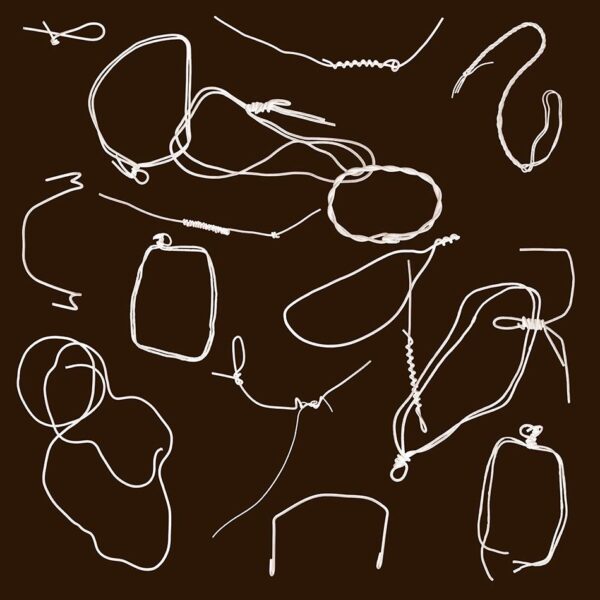
Fence wire scarf brown
100 x 100 cm
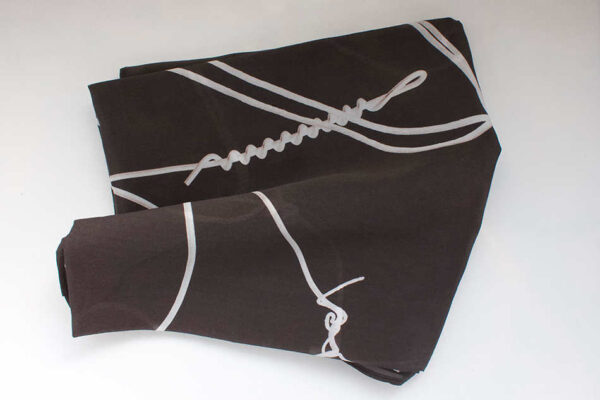
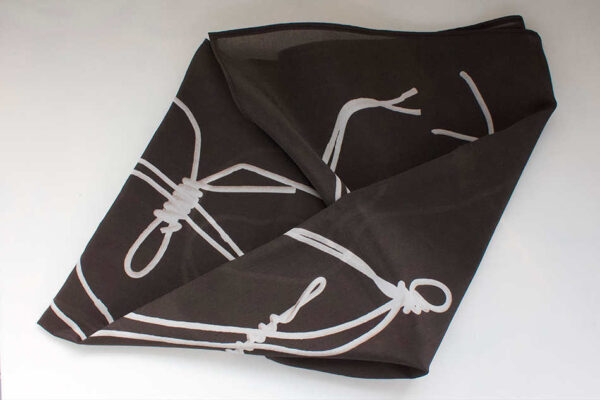
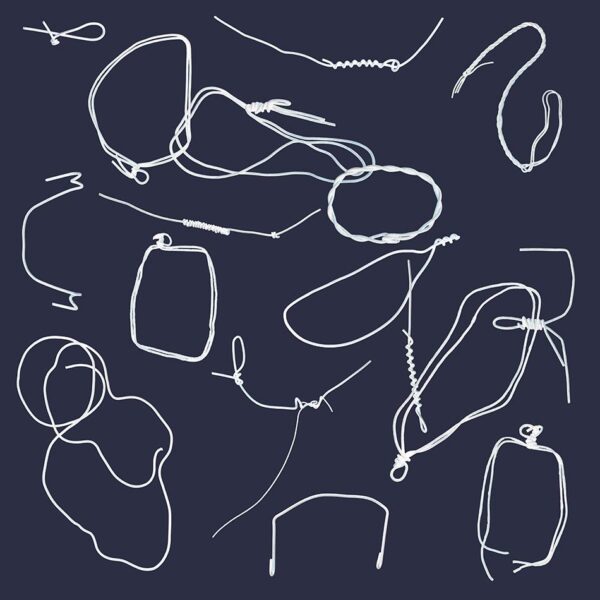
Fence wire scarf blue
100 x 100 cm
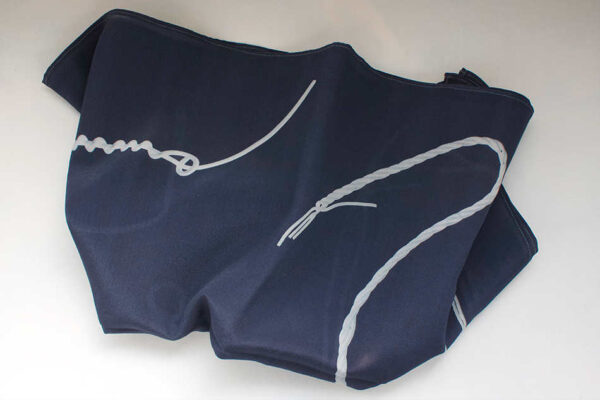
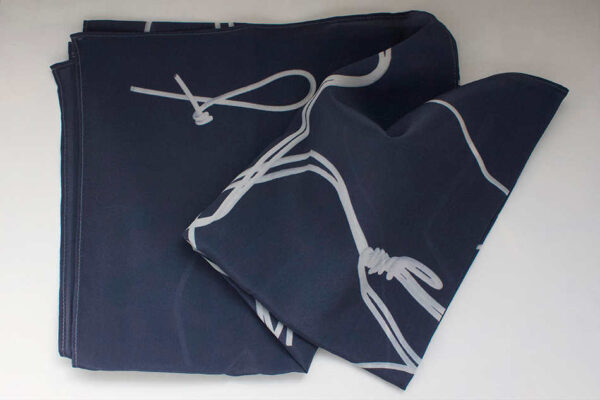
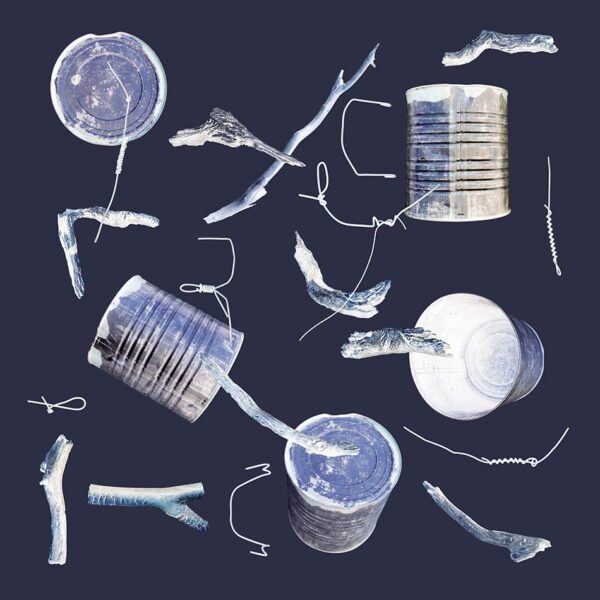
Tin can scarf
100 x 100 cm
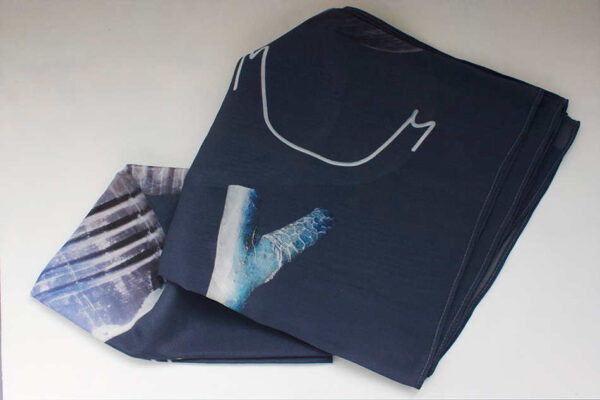
Scarf design GS
